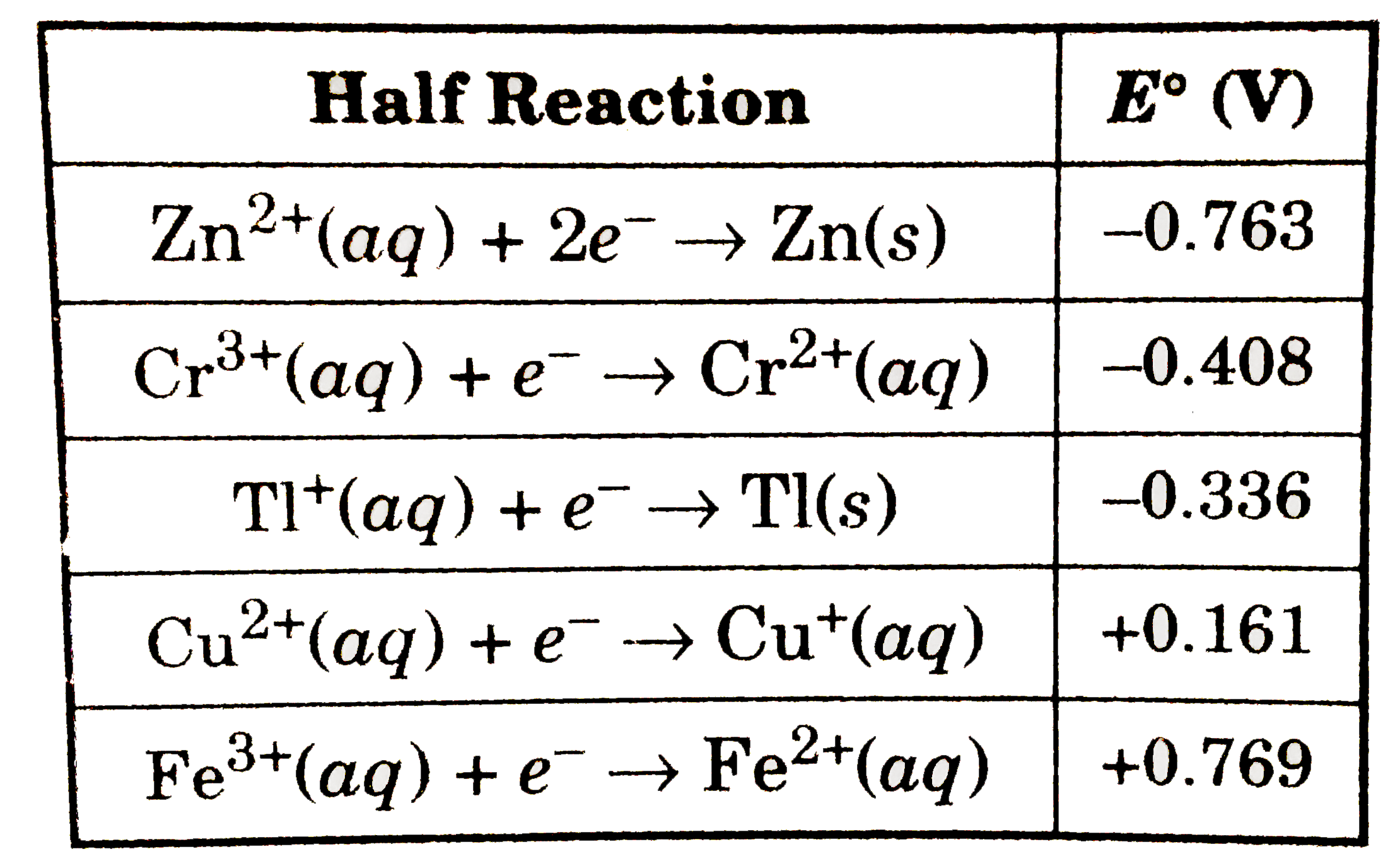Arrange the following oxidizing agents in order of increasing strength under standard state conditions.The standard potentials for the reduction half reaction are given: CI2(g)(1.36V),I2(s)(0.54V),Cd2+(aq)(−0.4V)Solution in Marathi
Step by step video & image solution for Arrange the following oxidizing agents in order of increasing strength under standard state conditions.The standard potentials for the reduction half reaction are given: CI_(2(g)) (1.36V), I_2(s) (0.54V), Cd_((aq))^(2+) (-0.4V) by Chemistry experts to help you in doubts & scoring excellent marks in Class 12 exams.
Updated on:21/07/2023Topper's Solved these Questions
Similar Questions
What is a coordination compound?
View SolutionWhich of the following has highest electron gain enthalpy ?
View SolutionDetermining the realtive strengths of oxidizing and reducing agents
a. Arrange the following oxidizing agents in order of increasing strength unde standard-state conditions: Br2(1),Fe3+(aq.),Cr2O2−7(aq.)
b. Arrange the following reducine agents in order of increasing strength under standard state condition: Al(a),Na(s),Zn(s)
Strategy: Pick our the half reactions in Table 3.1 that involve the given oxidizing or reducing agents and list them, along with their E∘ value increases (i.e. becomes more positive) whereas the strength of a reducing agent increases as the E∘ value decreases (i.e. becomes more negative).
View Solution
Use the standard reduction potentials to find the standard cell potential E∘, for the reaction:
Zn(s)+2Tl+(aq)→Zn2+(aq)+2Tl(s)
View SolutionThe equilibrium constant of the following redox rection at 298 K is 1×108
2Fe3+(aq.)+2I−(aq.)⇔2Fe2+(aq.)+I2(s)
If the standard reducing potential of iodine becoming iodide is +0.54 V. what is the standard reduction potential of Fe3+/Fe2+ ?
View SolutionArrange the following reducing agents in the order of increasing strength under standard state condition. Justify the answer.
ElementAl(s)Cu(s)Cl(aq)Ni(s)E∘−1.66V0.34V1.36V−0.26V
View SolutionThe equilibrium constant of the following redox rection at 298 K is 1×108
2Fe3+(aq.)+2I−(aq.)⇔2Fe2+(aq.)+I2(s)
If the standard reducing potential of iodine becoming iodide is +0.54 V. what is the standard reduction potential of Fe3+/Fe2+ ?
View SolutionThe standard reduction potential of the half reaction Zn^(2+)(aq) + 2e^(-) rarr Zn(s), E^@ = 0.76V . What do you think of the standard reduction potential for the half reaction.
View SolutionWhich species in each of the following pairs is better oxidizing agent under standard state conditions (standard potentials are given)? Give reason for your answer:Pb2+(aq)(−0.13V)orCo2+(aq)(−0.28V)
View SolutionWhich species in each of the following pairs is better oxidizing agent under standard state conditions (standard potentials are given)? Give reason for your answer:CI2(g)(1.36V)orCr3+(aq)(−0.74V)
View SolutionArrange the following oxidizing agents in order of increasing strength under standard state conditions.The standard potentials for the reduction half reaction are given: Ag+(aq)(0.8V),AI3+(aq)(−166V),F2(g)(2.87V)
View SolutionArrange the following reducing agents in order of increasing strength under standard stateconditions, the standard potentials for the reduction half reactions being given. AI(s)(−1.66V),CIaq−(1.36V),Cu(s)(0.34V).
View SolutionArrange the following reducing agents in order of increasing strength under standard stateconditions, the standard potentials for the reduction half reactions being given. Fe_((s)) (-0.44V), Br_((aq))^-1 (1.09 V), Ni_((s))(-0.26V)
View SolutionPredict whether the following reactions occur under standard state conditions: OξdationofAg(s)byCl2(g) E∘Ag=0.8V'E∘C12=1.36V
View SolutionThe standard reduction potentials at 298K for the following half reactions are given against each

Which is the strongest reducing agent?
(a)Zn(s)
(b)Cr(s)
(c)H2(s)
(d)Fe2+(aq)
View Solution
